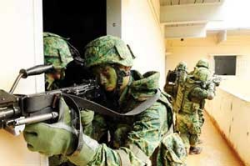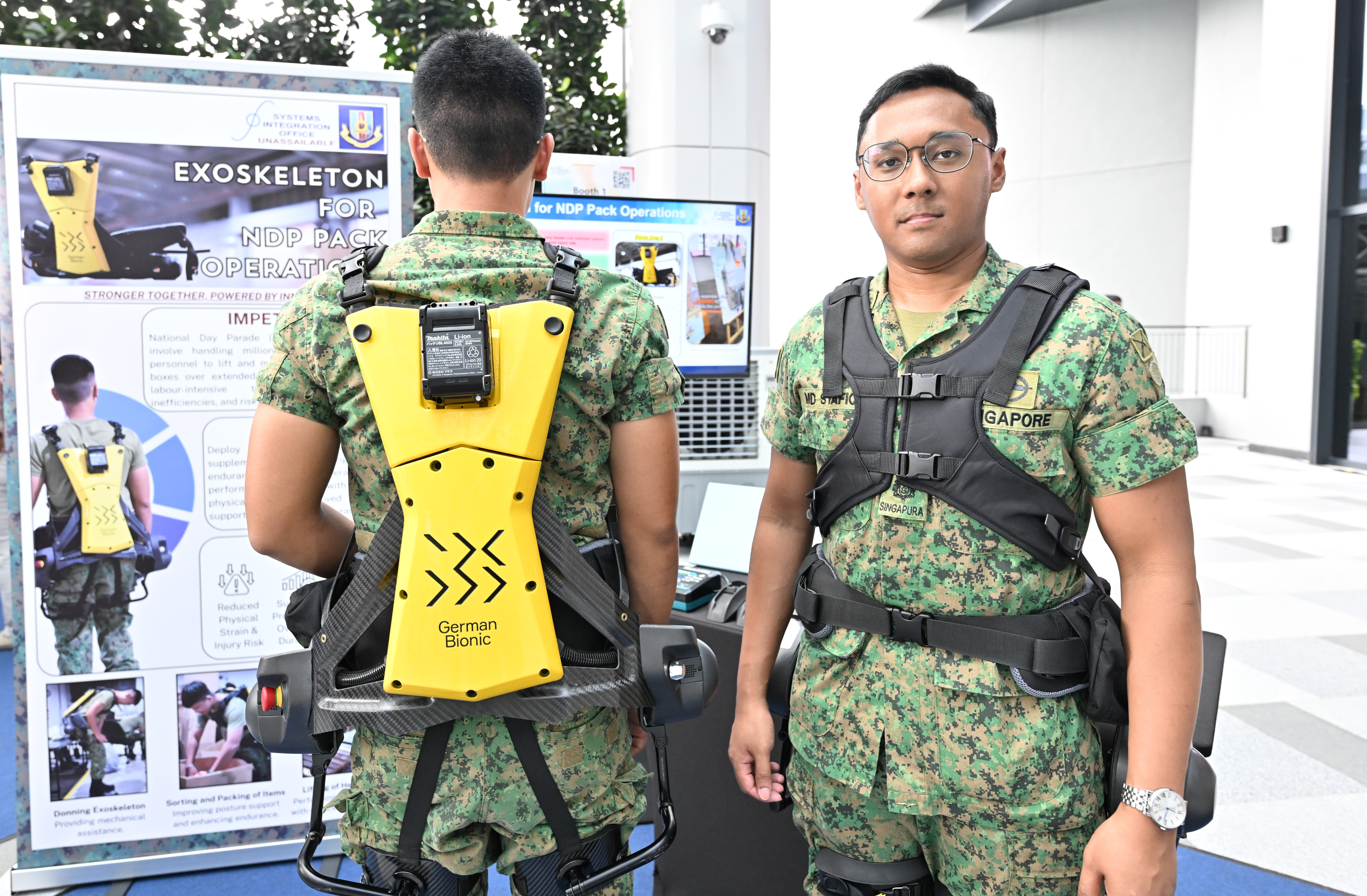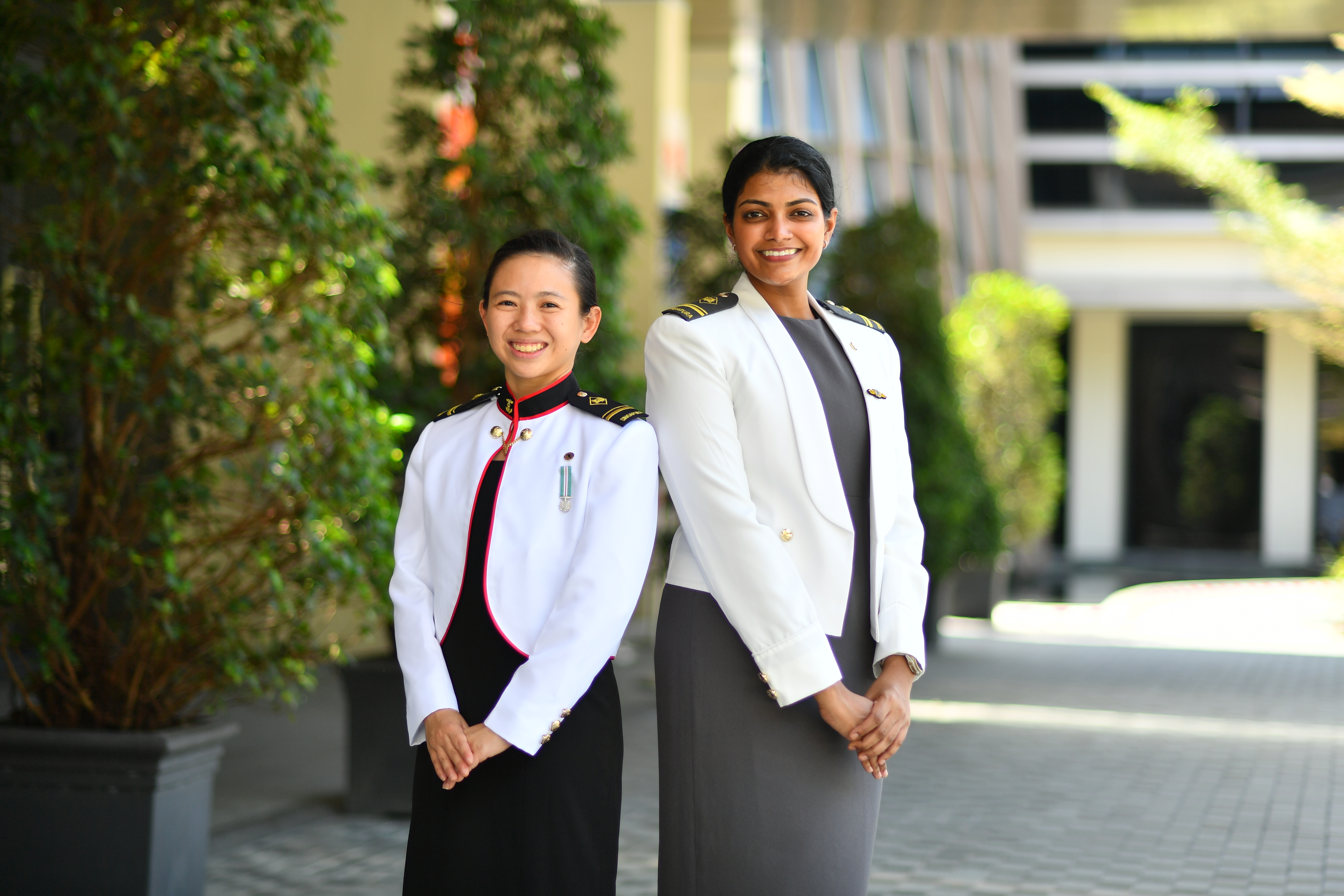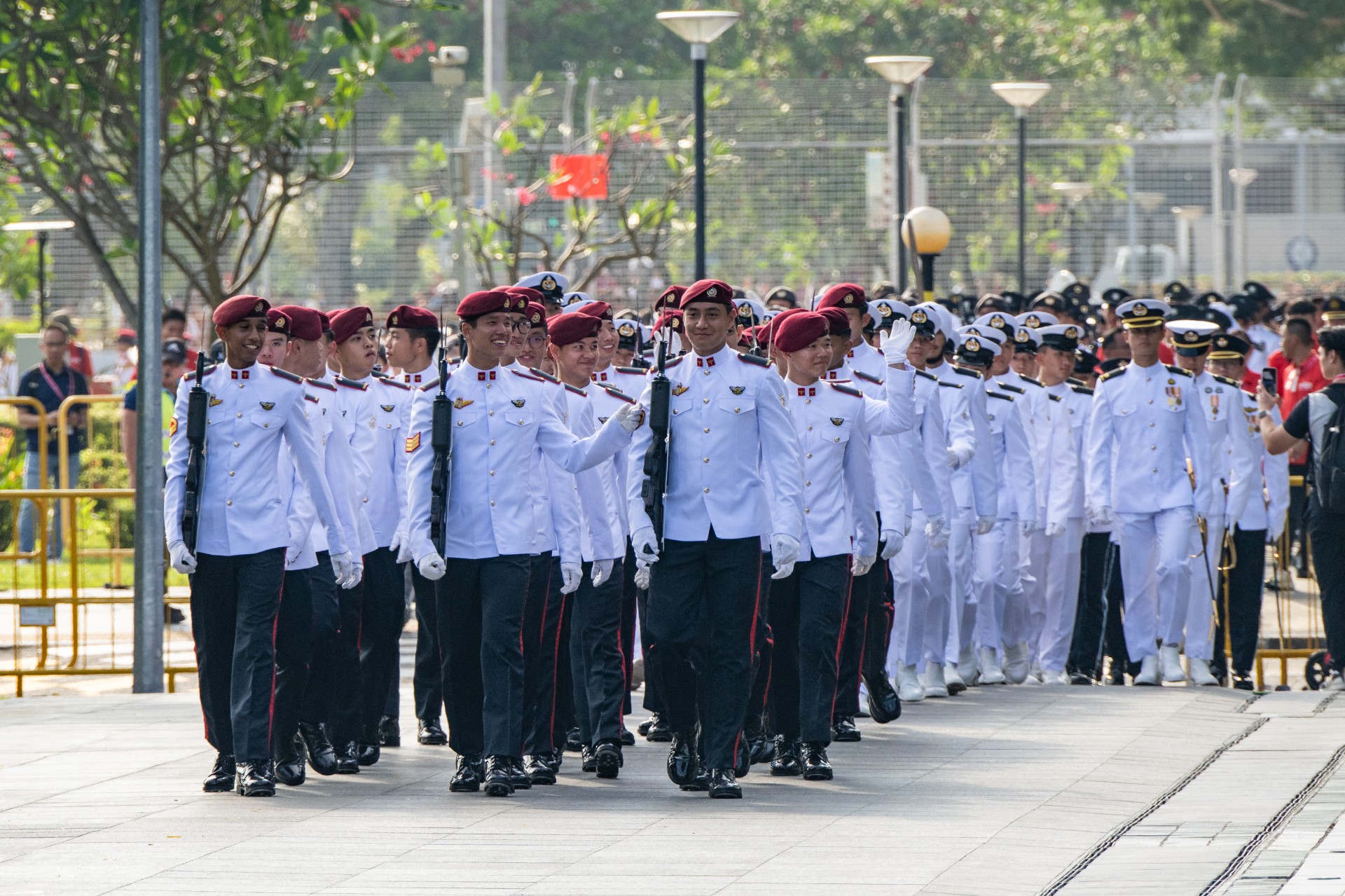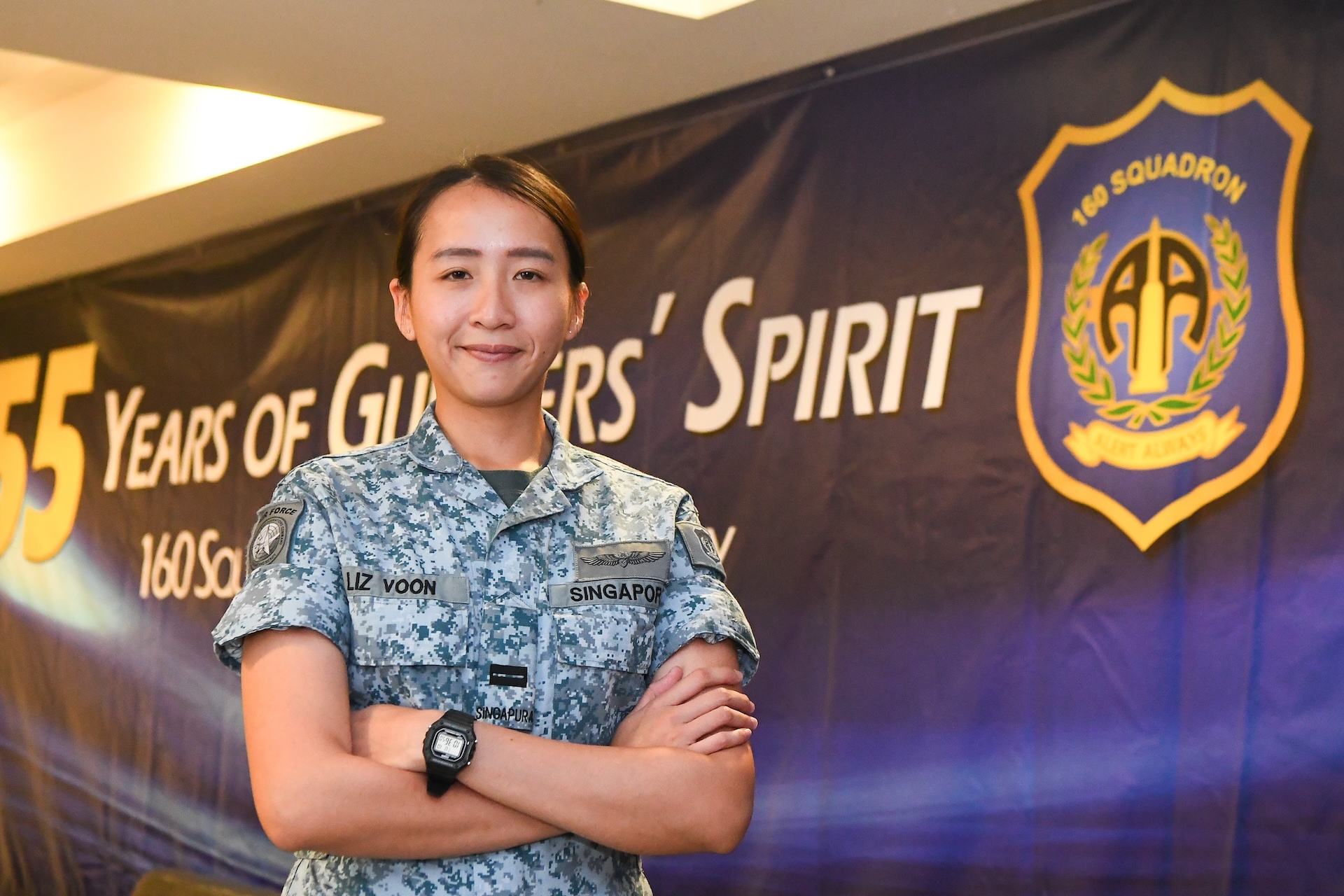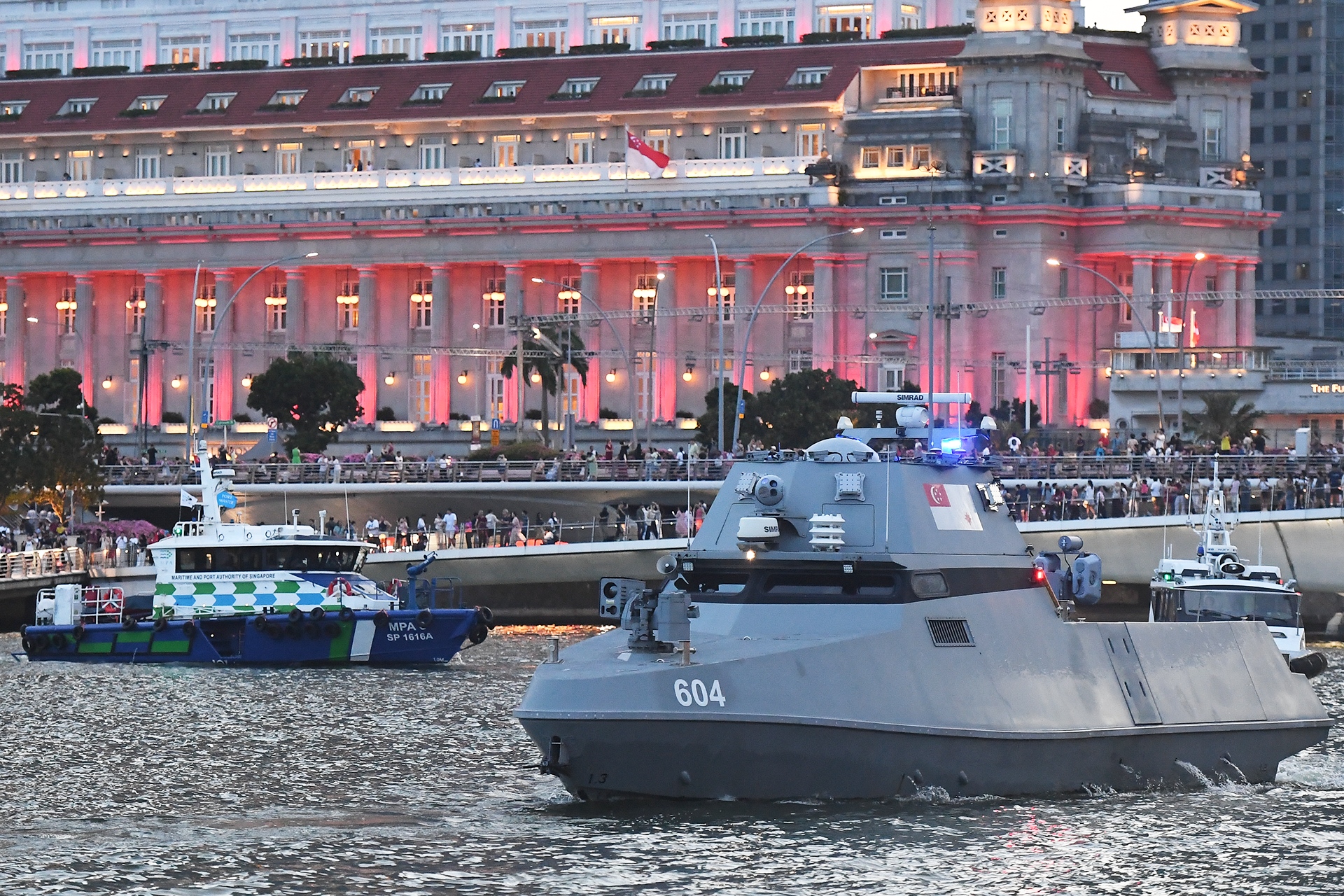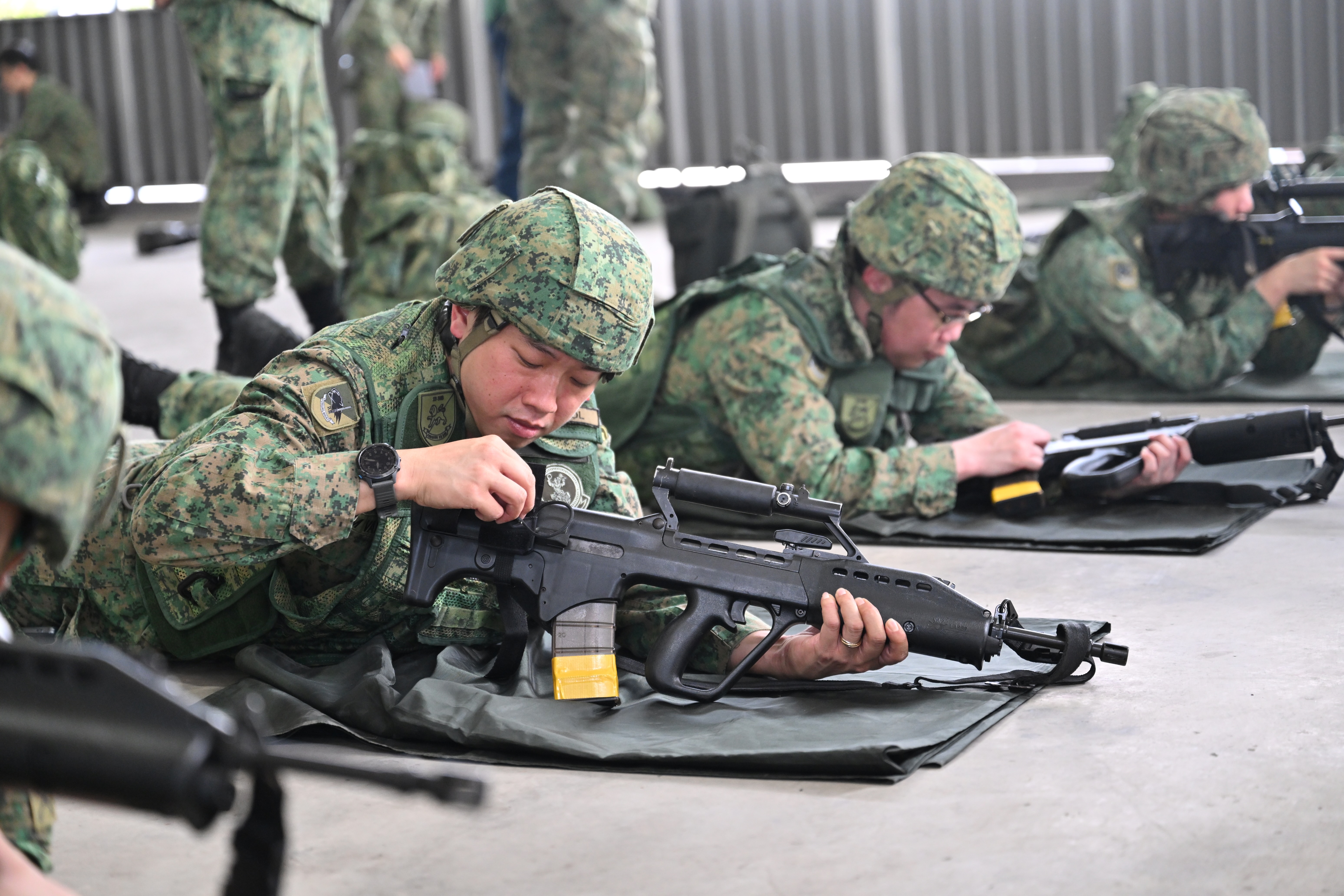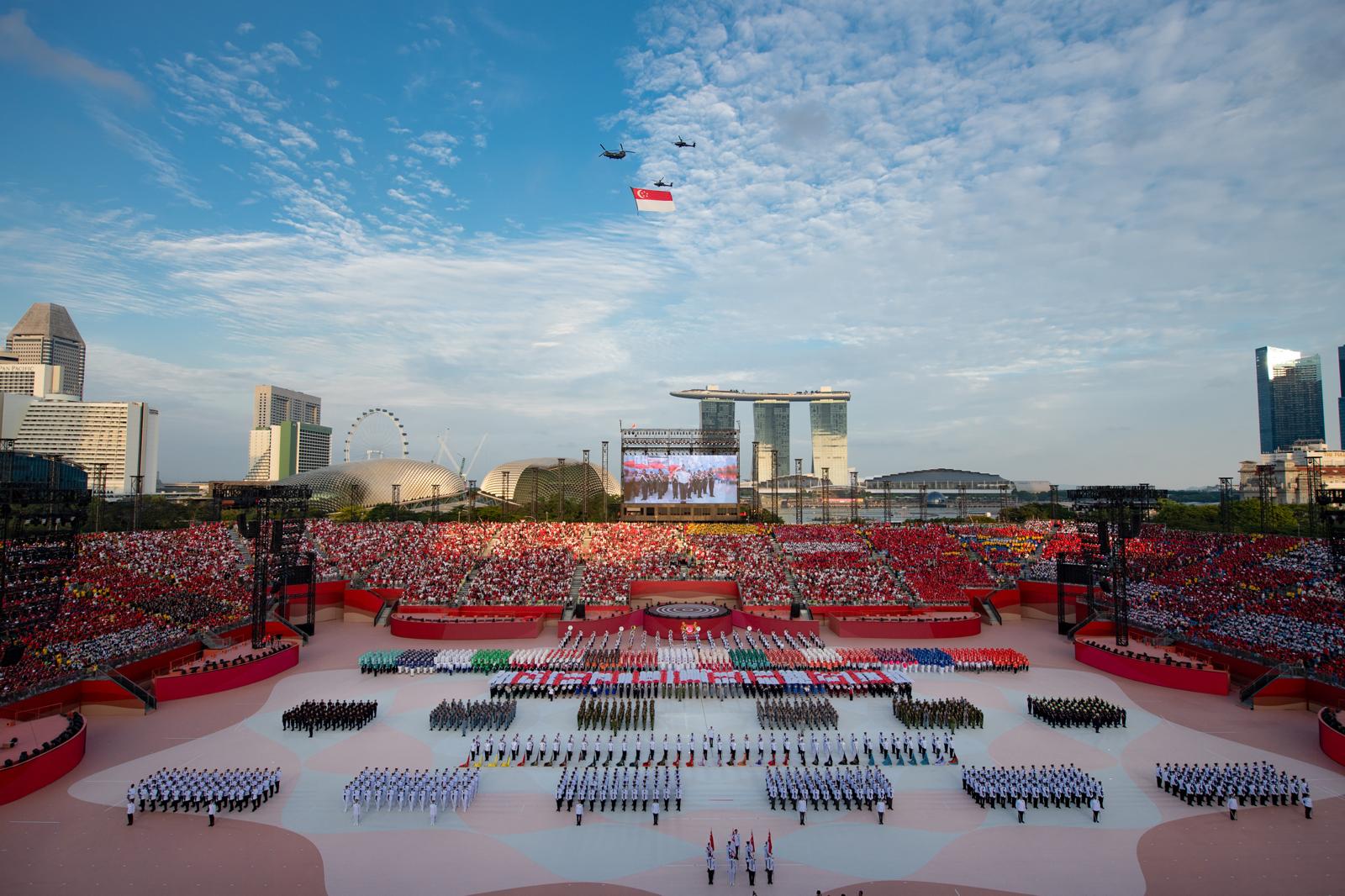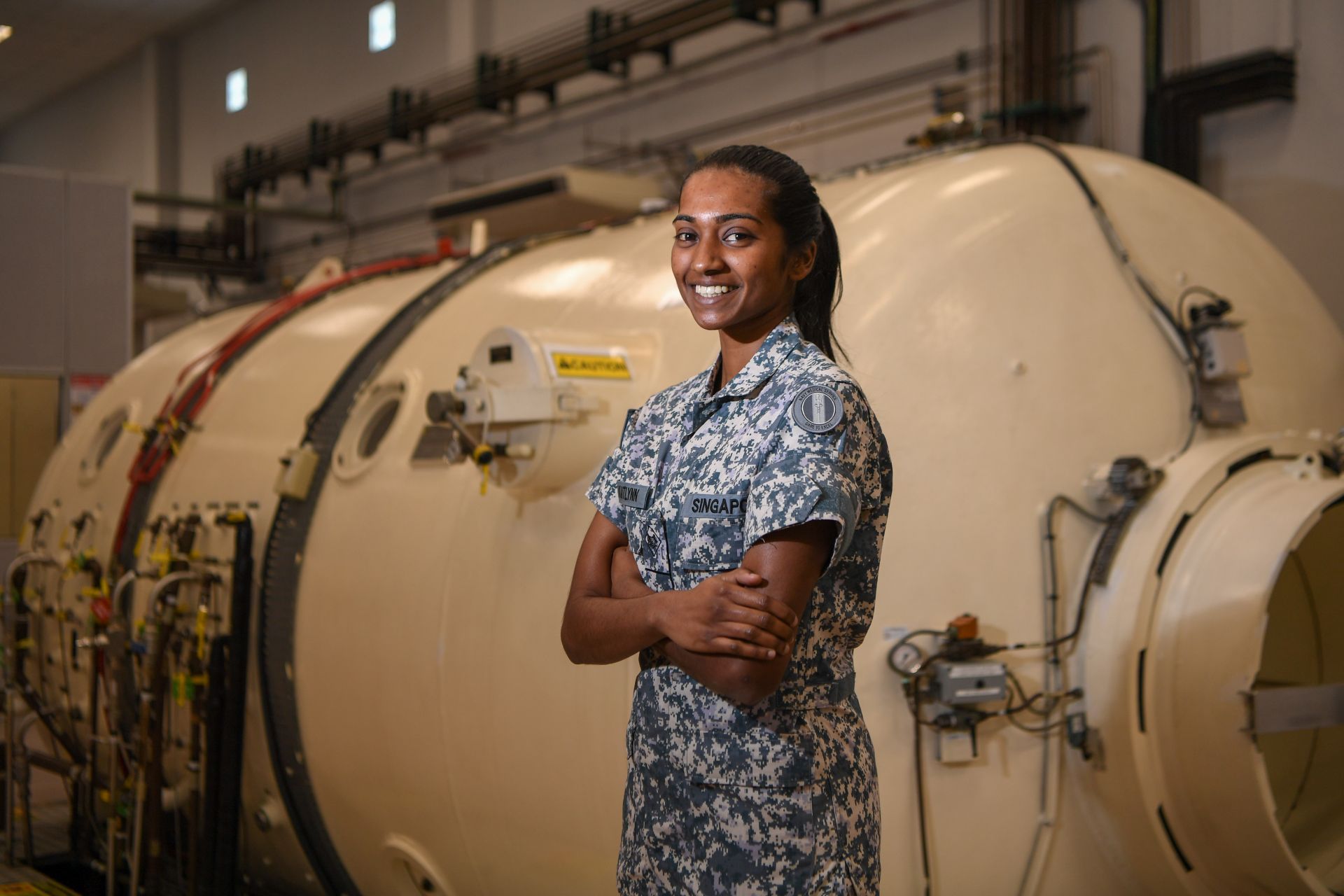GEARING UP FOR NETWORKED URBAN OPERATIONS
PHOTO // Chua Soon Lye and Chai Sian Liang
The SAF beefs up its urban warfare capabilities by arming its forces with cutting-edge technology - the Advanced Combat Man System - that allows for quick and easy communication of updated battlefield information between tactical units.
Famous military strategist Sun Tzu once wrote: "If you know the enemy and know yourself, your victory will not stand in doubt."
Even though hundreds of years may have passed since then, this concept still remains remarkably relevant in today's context. With the continual progress of technology, information has become a critical tool that the modern army wields to achieve mission success.
In particular, urban combat has become an increasingly important area of operations for the 3rd Generation Singapore Armed Forces (SAF). These days, troops are expected to be operationally proficient in both natural and urban environments.
Bearing this in mind, the SAF has progressively capitalised on new technology to sharpen its edge and strengthen the flexibility of its fighting forces.
PIONEER takes a close look at the Army's enhanced urban operation capabilities as they showcase their Advanced Combat Man System (ACMS) at the newly launched Murai Urban Training Facility (MUTF).
Sense and 'sensor-bility'
As operations grow in scope and variety, it becomes more significant than ever for the military to see more, understand better and react faster. That means extending its information reach to establish an accurate picture of the battlefield, allowing the SAF to shape its operations in a more calibrated and coordinated manner.
Part of the move by the 3rd Generation army to hone its capabilities in urban operations involves gearing up as a network-centric force. To this end, the section commander and two team leaders in a seven-man section will be armed with the ACMS.
At a compact 8kg, the system's state-of-the-art equipment boasts an impressive array of sensors and communication devices. This includes a personal radio, a keypad, a camera-mounted weapon, a display attached to the helmet, and even a portable computer to process all the data that is collected.
Through the use of these myriad devices, tactical units can disseminate as well as access updated information more easily and conveniently than before.
The radio set, for instance, is no longer just a tool which helps soldiers relay information by voice. It also has a built-in Global Positioning System (GPS) that tracks their locations.
Another notable feature of the ACMS is the head-mounted display which can provide a soldier with several different images. These range from a digital map or satellite pictures of the terrain to videos captured by other cameras or sensors. The image is also constantly refreshed to reflect forces on the move.
Once an enemy has been spotted, the section commander can pinpoint the exact location of the target by using the camera attached to his SAR-21 assault rifle. The positions of both friend and foe are thus clearly identified on the digital or satellite maps, allowing troops on the ground to prevent fratricide and manoeuvre more accurately to take out the adversary.
Said 7 Infantry Brigade's 1SG Li Weiming: "With this new system, our men know what's happening in the surrounding environment - where our comrades are, and the location of our enemies. So we know clearly which are the danger areas to avoid."
In addition, images and information acquired by the troops are transmitted back almost instantly to command headquarters. This real-time feedback results in a common operating picture, enhancing their ability to make timely decisions if any changes occur on the battlefield.
Combining through connectivity
At the same time, individual soldiers and units are linked to their fellow forces, facilitating collaboration and empowering each section to tap the larger available resources of the battalion as a whole. This strengthened flow of communication channels translates into heightened teamwork and rapid mobility on the battlefield.
Explained BG Chan Chun Sing, Commander 9th Division and Chief Infantry Officer: "The soldier is no longer just fighting as an individual, or even as a seven-man section, but leveraging on the firepower and sensory network of the wider SAF system."
Thanks to the ACMS portable keypad, appropriate assistance can be provided speedily when deemed necessary. Instead of relying on radio sets and verbal descriptions, soldiers can now call for medical help or request fire support from nearby forces with just the simple push of a button.
The section commander can also send text messages to his superiors, updating them with situation reports on his team's status or hostile threats in the vicinity.
In response, commanders can assign snipers to eliminate problematic targets, or even activate big-calibre firepower in the form of artillery fires or air assets to cut off the withdrawal of fleeing enemy forces.
Aside from the faster delivery of precision fires, 1SG Muhammad Hidayat believes that the ability to call for medical backup promptly is the most useful ACMS function.
"As a section commander, the survival of my soldiers and helping them are the most important things to me," he added.
Multi-tasking new generation
Given the influx of data and images from various sources, will all these additional gadgets prove too distracting for the average soldier when he is out in the field?
Noting that becoming conversant with the ACMS is "no different from a person learning to drive a car", BG Chan said: "A driver has to learn to deal with quite a lot of things, too, but most people can do them quite well once they get used to it."
Indeed, that appears to be the case for 1SG Hidayat. Adjusting to the ACMS did not pose a major challenge to this section commander. He said that while "there's no time norm for how long a person becomes comfortable with the system", it took him merely a few days to adapt to operating with these new tools.
A Command and Control Hub has been set up at headquarters to help analyse and process all the raw data gathered. This way, spam is filtered out, preventing the soldiers from being overwhelmed by superfluous information.
The ACMS was also designed with input by the troops in order to be soldier-friendly. Some features, such as the medic alert button and ability to send text messages via the communication keypad, were incorporated based on feedback from soldiers on the ground.
Said BG Chan: "They told us what kind of functionalities they prefer, the kind of systems they like, the kind of ergonomics and designs they want to be integrated. This makes it much easier to train them subsequently."
"Young people these days multi-task quite well. They can look at the enemy and send text messages without even looking at the keypad. This is one of the ways in which we leverage the strengths of the younger generation to design this system," he added.
Taking it to the streets
Apart from arming soldiers with state-of-the-art equipment, the SAF has also provided them with a realistic operating environment to put their skills into practice.
When one steps into the MUTF, it appears like any other normal town area at first glance. Not only are there many signs proclaiming some buildings as shops, factories or warehouses, but bus-stops, traffic lights and even an overhead bridge were also constructed to inject the place with an extra dose of authenticity.
Built on existing training ground in Lim Chu Kang, this town features 150 buildings to date, and can facilitate the training of more than one battalion at any one time.
Offering several structural layouts, from industrial to commercial and residential districts, the training facility exposes soldiers to a range of urban terrains and allows them to play out various training scenarios, such as peace support, area stabilisation and combined arms operations.
LTC Jimmy Toh, Head Training of 9th Division, revealed that "the design of MUTF was shaped by engaging the input of a wide spectrum of soldiers who would be training in it, from the rifleman to specialists and officers".
"Prior to construction, the urban operations' Community of Practice formed by the WOSEs participated actively in the design of each and every building. The intent is to ensure that every building layout is different, providing our soldiers with a challenging and realistic training environment," he said.
Some rooms are also outfitted with simulators that create noise and blast effects, bringing about a greater level of realism in their training.
The SAF's existing Battlefield Instrumentation System uses laser and info-communication technology to connect soldiers, weapon systems and fighting platforms outdoors. Complementing this is an indoor tracking system in MUTF which captures the happenings within the buildings.
Aided by playback of footage from numerous video cameras around the facility, commanders can conduct accurate post-exercise reviews of the actions taken by individual troops.
A large-scale urban operations exercise, which displayed the enhanced capabilities of about 500 soldiers who sported the ACMS and new SAF uniform, was carried out at the MUTF on 5 Sep.
The new facility was officially opened by Minister for Defence Teo Chee Hean, who watched the seven-man tactical sections in action as they successfully secured an objective.
Always advancing
Unlike the days of the 1st and 2nd Generation SAF, urban operations have increasingly become a much more precise, fast-paced, and quiet affair. The modus operandi for today's urban warrior seems to be "swift, silent and deadly".
During a previous urban operations exercise conducted in 2006, Mr Teo had said: "We are always ready. That means if we have to operate today, we will operate with what we have. And what we have is already very effective."
He added: "But what we want to do, because we are never satisfied with what we have, is to keep on improving on it, so that as the technology becomes available, we want to exploit the technology as quickly as possible, so that our soldiers have the best the technology can offer when they go into the battlefield."
LTC Kong Kam Yean, Head Plans, HQ 9 Division Infantry, said: "All active manoeuvre forces as well as the NS training institute will be equipped with ACMS from mid-2009 onwards."
This spirit to strive for ever higher standards can be seen in the Army's continual efforts to optimise available technologies and raise their competencies as a highly mobile and interconnected force. Information, communication and training are clearly the key enablers in this ongoing transformation.
As operations increasingly shift towards urban settings, many challenges may await the 3rd Generation soldiers in this fluid and complex environment. But with the boosts to their urban capabilities provided by the new training facility and networking technology of the improved ACMS, it looks like the SAF is ready to take on any challenge.
